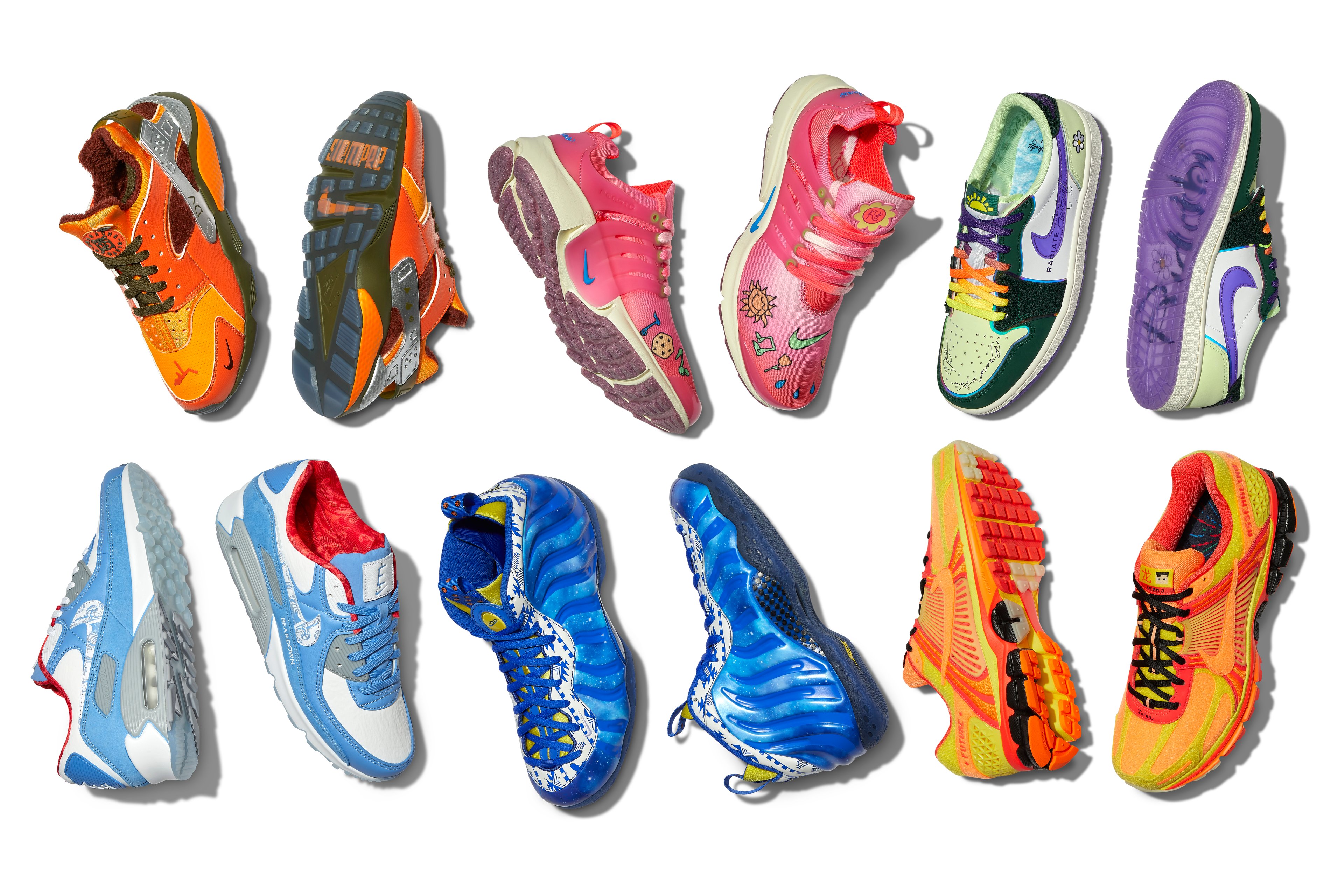Running records have been falling at a blistering pace lately. Eliud Kipchoge ran the first official sub-2 hour marathon in Vienna in October 2019, which was considered (like the sub-4-minute mile) a time mark that could not be broken. That same week, Brigid Kosgei set a new world record in the women's event in the 2019 Chicago marathon, beating the old one by 81 seconds. The common denominator? A brand of shoe.
When legendary Oregon track coach Bill Bowerman started pouring rubber on his wife's waffle iron in the mid-1960s to make the first shoe dedicated to running events, he soon after formed a company with one of his athletes, Phil Knight, that eventually became Nike (NKE +1.00%). The shoe company has been at the bleeding edge of the running market ever since. Nike's efforts, along with such colorful running personalities as Steve Prefontaine, helped launch the jogging revolution of the 1970s.
Since then, running shoes have increased in quality and performance, and some have even been game-changers. Now it appears we have another technological jump that is so good it is causing the governing body of track -- World Athletics -- to consider banning or restricting the shoe because it allegedly gives an unfair advantage.
So, what is this shoe? Nike's Vaporfly.

Image source: Getty Images.
News reports say that World Athletics will come to a decision on the shoe in the next month or so. Nike has said it will respect whatever decision is made: "We respect the IAAF (now World Athletics) and the spirit of their rules, and we do not create any running shoes that return more energy than the runner expends." It should be noted that "returning more energy than the runner expends" violates a few laws of physics.
Whichever way the ruling body rules, Nike stands to benefit from the shoe brand's growing popularity. Here's what that could mean for the company and for investors.
Technological leaps in running shoes are rare
The Vaporfly is Nike's elite running shoe, which gives the runner such a mechanical advantage that it has been referred to by some sports scientists as "technological doping." The sole is made of Zoom X, an ultra-light material originally used in aircraft. A carbon-fiber support in the sole helps return energy back to the legs with each step. Runners say it feels like the shoe is propelling them forward. The New York Times conducted a study on the Vaporfly and found it did make runners faster -- by about 3%-4%. In an analysis of a series of races in 2018, it turns out that 25 of the 36 podium finishes in the Big 6 marathons were held by Vaporfly runners. So, there clearly is something special about this brand of shoes.
The Vaporfly is an expensive shoe -- about $250 per pair, which is about double the typical price point for a running shoe. Will customers pay that? Given that running enthusiasts will spend thousands for a VIP package to a big marathon, spending an extra hundred bucks to shave 11 minutes off their competition time (and probably attain a personal record) seems like money well spent. In fact, the New York Times study showed a roughly 66% probability that a runner will set a personal best time while using the shoe.
Part of the problem with a better shoe revolves around the time comparison of records. That said, when tracks went from cinder surfaces to asphalt runners got faster too. So technological improvements have long been part of the track-and-field landscape.

Image source: Nike
Nike dominates the running shoe market already
Running shoes are a $13 billion market that is expected to grow 5% annually over the next 5 years. Nike already has a sizable share in running shoes, holding 51% of the market. Asics is a distant second at 15% market share and Adidas is third at about 6%. Relative newcomer Under Armour has about 2% of the market.
Shoes account for about 47% of Nike's revenue, so increasing share will meaningfully affect revenue growth. Not only that, the improved performance may cause current Nike customers to upgrade to the new Vaporfly, especially given tangible evidence it makes runners faster. International sales are also a growth market -- Nike has been working hard to increase overseas sales, and there the Nike brand name is second to none.
It should be noted here that any proposed regulations won't affect the typical amateur runner, and Vaporfly shoes will be fine for competing in your local 5k or marathon. So, unless you are an elite runner looking to set a ratified time, any potential ban likely won't affect you. In many ways, a ban should be immaterial for Nike's stock. In fact, you could make an argument that the publicity of a ban due to a shoe being too performance-enhancing might actually be good for the company. A past example of this is Callaway's Big Bertha golf driver, which is banned in PGA events but found its way into the typical weekend duffer's golf bag anyway.
A premium multiple for a premium growth story
Nike is trading at a premium multiple -- about 33 times expected 2020 earnings, although that is much less than publicly traded athletic apparel companies like Under Armour which trades at 62 times earnings or lululemon athletica which trades at 49 times. Nike is still considered a growth story, and it has been growing its shoe revenue at a faster rate than the industry. Certainly, this summer's Olympics will generate buzz for the running shoe industry in general, even if the athletes competing in the 2020 games end up being forbidden from using the shoe.






